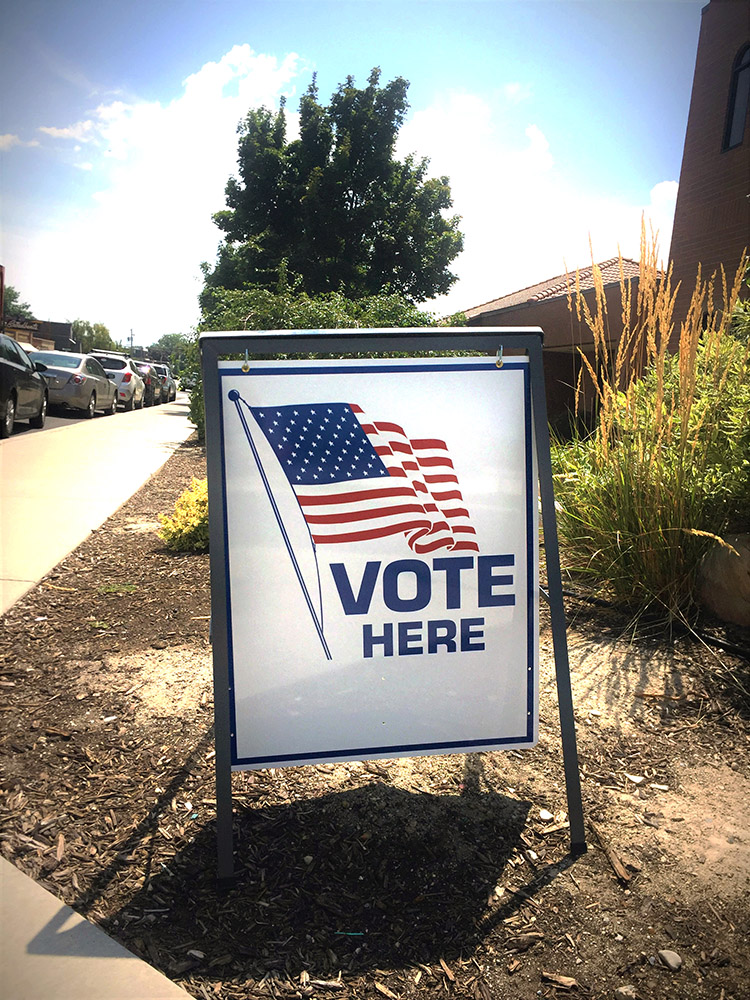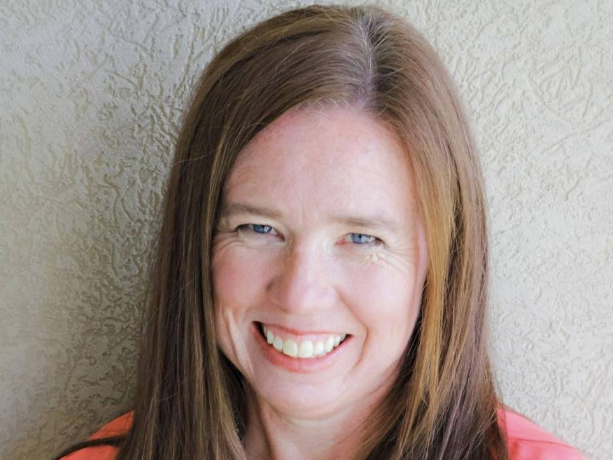Politics & Government
ASD Seat 2 candidates Lincoln and Rencher share views
Published
3 years agoon

Lehi voters will receive ballots this week, and there are several big races to weigh in on, including a new Alpine School District Board of Education seat to represent west Lehi and Saratoga Springs. The newly created seat (ASD2) was formed after redistricting from the 2020 census revealed significant growth on Utah County’s westside.
Earlier this year, three candidates ran for the open seat, and two advanced after the Primary Election, Joylin Lincoln and Wendy Rencher.
Voters can get to know the candidates by reading the questions and answers below and can also review series one questions and answers from the primary election here.
Lehi Free Press: How has the campaign gone? What are you hearing as a top issue from voters?

Joylin Lincoln: One of the campaign’s most significant issues this year is growth. The effect of growth across the District manifests in different ways. People are concerned that as we grow, their voice diminishes. They want local control (accountability), but with over 83,000 students residing in the District, how is that local control/authority effective? Growth makes it difficult for taxpayers to communicate effectively with their elected officials. How many people even know who their current school board representative is?
They worry about how growth impacts the classroom. How can teachers reach large numbers in their classrooms, ensuring every student’s education counts? The community is concerned that as we expand, we stretch teachers thin as class sizes and regulations increase. They are concerned for the safety of our students as tensions run high across the country. Voters want a school board that listens, understands growth and is proactive with the increasing number of demands on educators.

Wendy Rencher: It has been a privilege to visit parents, PTA and school community council members, educators, and other community members across Lehi and Saratoga Springs over the past few months. I am grateful for all the dedicated people invested in the educational process and working to help students in our communities.
People I have spoken with are concerned about growth, academic improvement, teacher retention, large class sizes, mental health issues, and ensuring kids are safe at school. Some have also raised concerns about the ASD bond, Critical Race Theory, and making sure we keep pornography out of our schools.
There are a lot of different ideas on these subjects, and often people feel very passionate about their point of view. We must continue to come together to talk about and work on the issues at hand. We create the best opportunities for students as parents and educators work together.
LFP: Do you support Prop 1 (The bond)?
Lincoln: Proposition 1 is a reasonable way to deal with growth in the District. It allows the taxpayers to have a say in how the District educates the changing population. After you get over the $595 million sticker shock and start digging into the bond, it becomes apparent that it is the cheapest route to funding our schools. Alpine School District did not bond in 2020. They listened to constituents, worked on ways to tighten their belts,and found additional ways to avoid bonding, but growth has not stopped. If the bond fails, the District has a few other tools in its tool belt to deal with the increase of over 5,000 students in the West over the next few years, all of which are more expensive.
I want to explore different ways to fund building schools when elected. Companies often approached the District with RDA requests, where a company receives a property tax rebate for building in an underdeveloped area. This request puts the District in an awkward position of picking winners and losers. School Districts should not be in the business of fostering economic growth. These agreements create a loss of funding and increase the number of students needing education. We should approach these cities and companies and find ways they can fund the school buildings that will be required to educate our students. One of these ways might be eliminating schools paying additional building impact fees to cities, allowing education dollars to stretch further.
Rencher: I support the Alpine School District Bond because I believe we have an obligation to create the conditions necessary to support student learning. Very large schools and classrooms are certainly not ideal learning conditions. With additional students moving in daily, we must advocate for funding to build additional schools and provide the best for our students. In addition, the bond will also allow for the necessary renovations of aging facilities and remediation of safety and security issues that are needed across the district. A bond is the most fiscally responsible way to address facility needs. Our growing community is accountable for educating the next generation of leaders.
LFP: What are your thoughts regarding Orem’s potential exit from the District?
Lincoln: Proposition 2 in Orem is a referendum on growth and how the District has handled growth at the district level. Some Orem residents are frustrated and do not feel that the District has adequately heard them. They worry that their voice will continue to be diluted across the District as Eagle Mountain, Saratoga Springs, and Lehi expand. The decision for Orem to leave Alpine District is a decision that Orem residents get to make as they go to the ballot box.
I am concerned about the initiative because Orem’s school boundaries cross city lines. Orem students attend schools outside of Orem, and Vineyard and Lindon’s students attend Orem schools. The separation of Orem will negatively impact these students, and not all these affected families will have a say in that decision. Recent discussions in social media about a split involve other cities joining the division; if we do not have a just “Orem” district, then the initiative needs to allow voters across the District to have a say.
Alpine School District should continue looking at and analyzing the District’s growth to determine if a split is necessary or if increased representation will solve these issues. As the District continues to review the division’s potential, the Board must commit to not negatively impacting students. They must create a plan to address the increased numbers of students, services, resources, and finances across the District.
Rencher: I am supportive of the democratic process and am grateful for the opportunity to exercise the right to vote. Public schools belong to us, the citizens of our communities. I am not in favor of the current Orem proposal. However, I do feel it is important for the Alpine Board of Education to continue to study the potential of a district split as our communities continue to grow. In my view, the Board is responsible for allocatingresources in a way that helps provide a quality education for all students in the event of a district split and doesn’t place students at a disadvantage because of where they live. Careful study, planning and preparation would give our students the best chance for success.
The most important factor to consider in a district split is how it will affect our students and the quality of their education. Focusing on student learning ensures that we make good student-centered decisions as we consider complex changes such as splitting a district. There are pros and cons to both large and smaller school districts. Those issues include economy of scale, representation, comprehensive high school programs, teacher salaries and benefits, transportation, and taxes, among others.
LFP: What is your top priority on day one if elected?
Lincoln: My top three priorities would be communication, policy, and accountability.
I will find additional ways to communicate with the communities I represent. I will push for board committee meetings to be open to the public. I want to find a way to solicit feedback on decisions before the board meeting to incorporate that feedback before the board votes. I want to spend time listening to stakeholders before making decisions.
Policy is the guardrail for a school district. The Board should review policy at every board meeting and ask, “Is this policy effective? How do we know it is effective? Do we still need this policy? Do we need to make changes to the policy?” The District has policies approved in the 80s and last reviewed in 2003; twenty years is a long time to go without checking a policy. I want to serve on the policy committee and update the District’s policies.
There is an irrefutable connection between school board effectiveness and district success. High-performing boards focus on fiduciary responsibilities and student achievement, act strategically, recruit an exceptional superintendent, raises and uses resources wisely, and fulfills all compliance expectations. The work of the Board focuses on “how well” the District is doing. As a board member, I intend to dive into the data to understand how we are doing as a District, making accountability a priority of my time on the Board. Accountability is the only way to ensure that every student’s education counts.
Rencher: My top priority is to consider the conditions, processes and resources that affect increased student achievement and then advocate for the things that will improve student learning. I want every student to be prepared for life and the post-secondary opportunities they desire.
Improving student learning at school starts with every student and parent connecting with the teachers and staff at their school. I believe this empowers students to do their best and take responsibility for their education. Student learning improves as we ensure teachers receive adequate and quality professional development and utilize student data to drive instruction effectively. It will be important to continue addressing teacher retention, class sizes, mental health and wellness, and collaborating with parents who are ultimately responsible for their child’s education.


